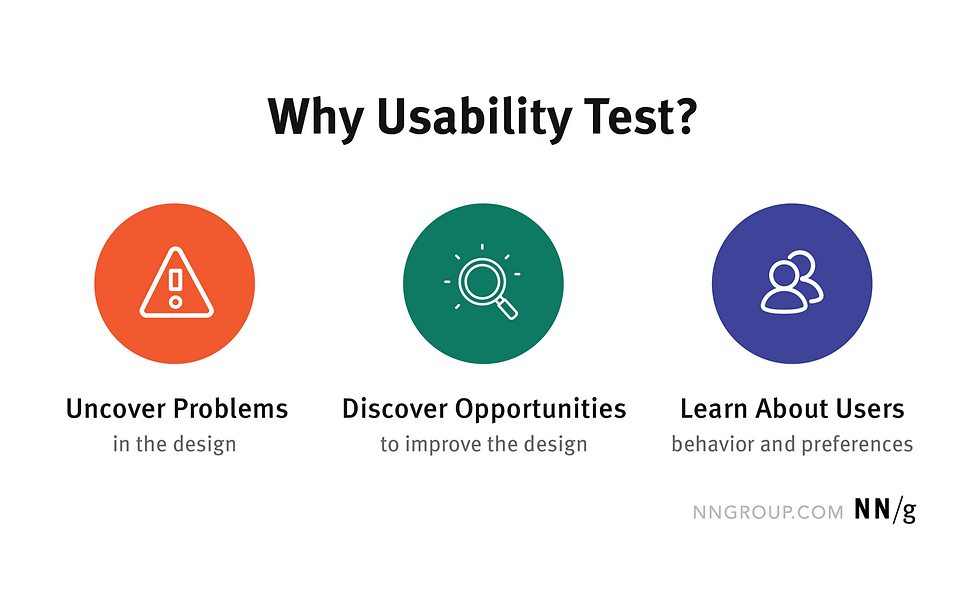The Complete Guide to Usability Testing
- dianafeldman
- Jul 19, 2023
- 2 min read

In the dynamic world of UX/UI design, creating seamless and user-friendly experiences is paramount. Usability testing plays a pivotal role in achieving this goal. In this comprehensive guide, we will explore the importance, methodologies, and best practices of usability testing. Join us on this journey as we uncover the power of usability testing and unleash the potential for success.
What is Usability Testing?
Usability testing is a method of evaluating how real users interact with a product, website, or application. It involves observing users as they perform tasks and collecting qualitative and quantitative data to uncover usability issues and gather valuable insights. By putting the product in the hands of users, designers can identify areas for improvement and make data-driven design decisions.
Benefits of Usability Testing in UX/UI Design
Usability testing offers a multitude of benefits for UX/UI design. First and foremost, it provides a deeper understanding of users' behaviors, preferences, and pain points. By uncovering usability issues early in the design process, usability testing saves time and resources, leading to improved user satisfaction, increased conversion rates, and enhanced brand perception.

Usability Testing Methodologies and Techniques
Several usability testing methodologies and techniques can be employed, depending on project goals, budget, and timeline. These may include moderated or unmoderated testing, remote testing, think-aloud protocols, task-based testing, and A/B testing. Each methodology has its strengths and considerations, allowing designers to choose the most suitable approach for their specific needs.
Best Practices for Conducting Usability Testing
To ensure effective usability testing, it is important to follow established best practices. These include defining clear objectives, carefully selecting representative user participants, creating realistic and meaningful tasks, avoiding bias during facilitation, and actively listening to user feedback.

Preparing well-structured test scenarios, capturing observations, and creating a comfortable testing environment are also crucial for successful usability testing.
Analyzing and Interpreting Usability Test Results
Collecting data during usability testing is only the first step. The real value lies in analyzing and interpreting the results to derive actionable insights. This includes identifying common patterns, prioritizing issues based on severity and impact, and making informed design recommendations. Effective analysis and interpretation of usability test results contribute to targeted improvements and iterative design iterations.
Case Studies: The Impact of Usability Testing
Numerous case studies demonstrate the positive impact of usability testing. For example, a popular e-commerce website identified a checkout usability issue through testing, resulting in a 30% increase in completed purchases. Another case study showcases how an app's navigation was refined based on user feedback, leading to improved user engagement and retention. These real-life examples highlight the significance of usability testing in delivering exceptional user experiences.
Conclusion: Elevating User Experiences through Usability Testing
Usability testing is a vital component of UX/UI design, allowing designers to optimize user experiences, identify issues, and make data-driven improvements. By incorporating usability testing into your design process, you can unlock the potential for success. Embrace the power of usability testing, improve user satisfaction, and drive business growth through exceptional user experiences.




Comments